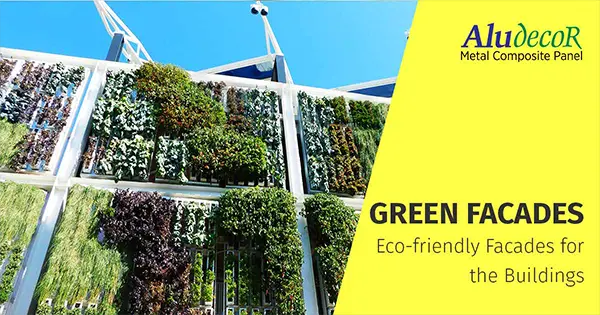Amongst all the sustainable building materials, aluminium composite panels stand out as the most sought-after option for their various attributes. These panels consist of a core material typically made from non-toxic polyethylene sandwiched between two layers of lightweight aluminium, offering a combination of durability, versatility, and environmental responsibility.
A key ecological advantage of ACPs lies in their recyclability, as both aluminium and polyethylene components can be separated and reused, reducing waste and conserving resources. Moreover, ACPs are incredibly energy-efficient to manufacture, with aluminium being one of the most recyclable materials on the planet.
Their lightweight nature also contributes to lower transportation emissions during delivery and installation. Additionally, ACPs often come with finishes and coatings that enhance their resistance to weathering, reducing maintenance requirements and conserving resources in the long run. Overall, aluminium composite panels exemplify a sustainable choice in modern construction, offering both aesthetic appeal and a commitment to environmentally responsible building practices.
How Aluminium Composite Panel Is a Green Building Material?
Aluminium composite panels exhibit several recyclable properties that make them environmentally responsible and a popular choice in the construction industry.
Aluminium is highly recyclable and retains its quality during the recycling process. Recycling aluminium consumes significantly less energy up to 95% less as compared to producing it from raw materials. Recycled aluminium can be used to make new ACPs or a wide range of other products. Moreover, in aluminium composite panels, the LDPE core can be separated from the two thin aluminium sheets during the recycling process allowing for the reuse of aluminium and the responsible disposal of the polyethylene core. Recycling ACPs reduces the amount of waste going into landfills, which is crucial for mitigating environmental pollution and conserving valuable landfill space.
How ACP Panels Contribute to Building Sustainable Structures?
When sustainable structures have become the core of every architectural project, finding green building materials is the talk of the town. Given this factor, aluminium composite panels have brought about revolutionary changes giving options to create and re-create structures keeping in mind the functional, safety and aesthetic priorities.
Energy Efficiency
Aluminium composite panels are lightweight and provide excellent insulation properties when used as cladding or facade material. They help in regulating indoor temperatures, reducing the need for excessive heating or cooling. This results in lower energy consumption for heating and air conditioning, which is essential for sustainable building design.
Recyclability
One of the primary reasons for ACPs being a green façade material is its high recyclability. After separating from its LDPE core, the two thin aluminium panels can be easily recycled. Recycling ACPs reduces the demand for new materials, conserves resources, and reduces waste sent to landfills. This aligns with sustainable building practices and reduces a structure's environmental footprint.
Sustainability
Most aluminium composite panel manufacturers in India often have sustainability certificates like LEEDS that often contribute to a building’s eco-friendliness rating using best practices for architects and designers to follow.
Longevity and Resilience
Aluminium cladding sheets are durable at their best and can withstand environmental aggressors like wind, rain and UV rays. This extends the lifespan of the structure reducing the need for premature renovations and replacements.
Aluminium composite panels play a vital role in building sustainable structures by enhancing energy efficiency, promoting recyclability, reducing maintenance requirements, and offering design versatility. When incorporated thoughtfully into building projects, acp cladding contributes to environmentally responsible and long-lasting construction practices, aligning with global sustainability goals.
Conclusion
Aludecor has established itself as a steadfast advocate for eco-friendly practices and green building materials.
We believe that eco-friendly design should not be a choice but a standard, and our ACP sheets are a prime example of how innovation and environmental responsibility can go hand in hand in creating a greener future.





